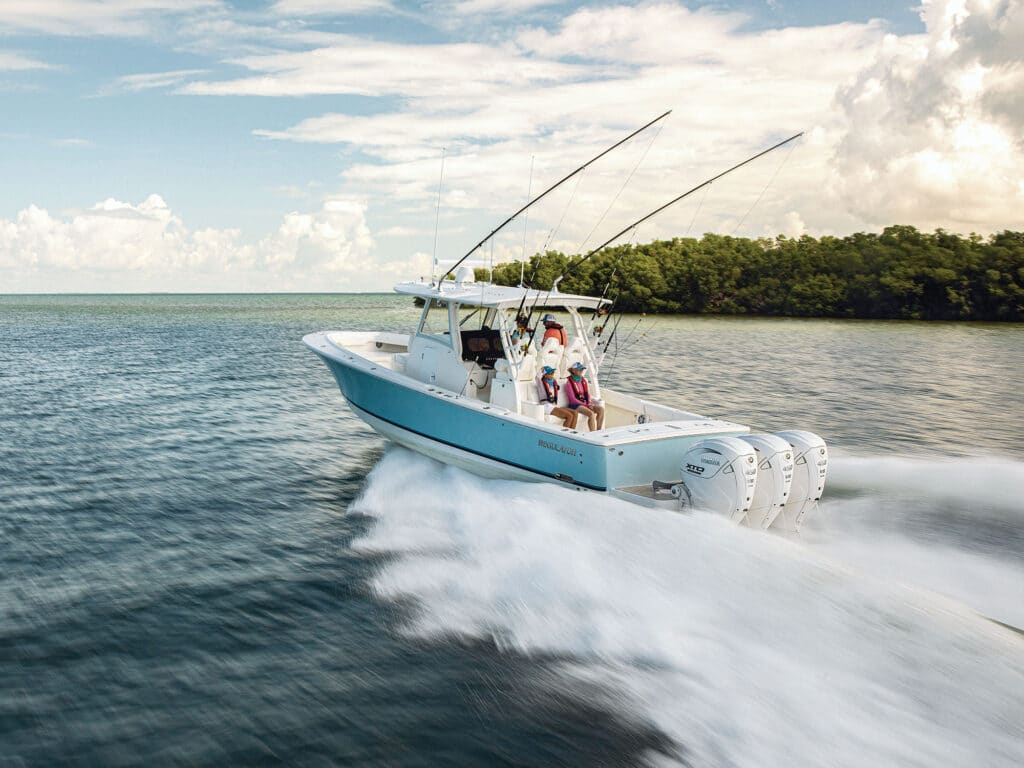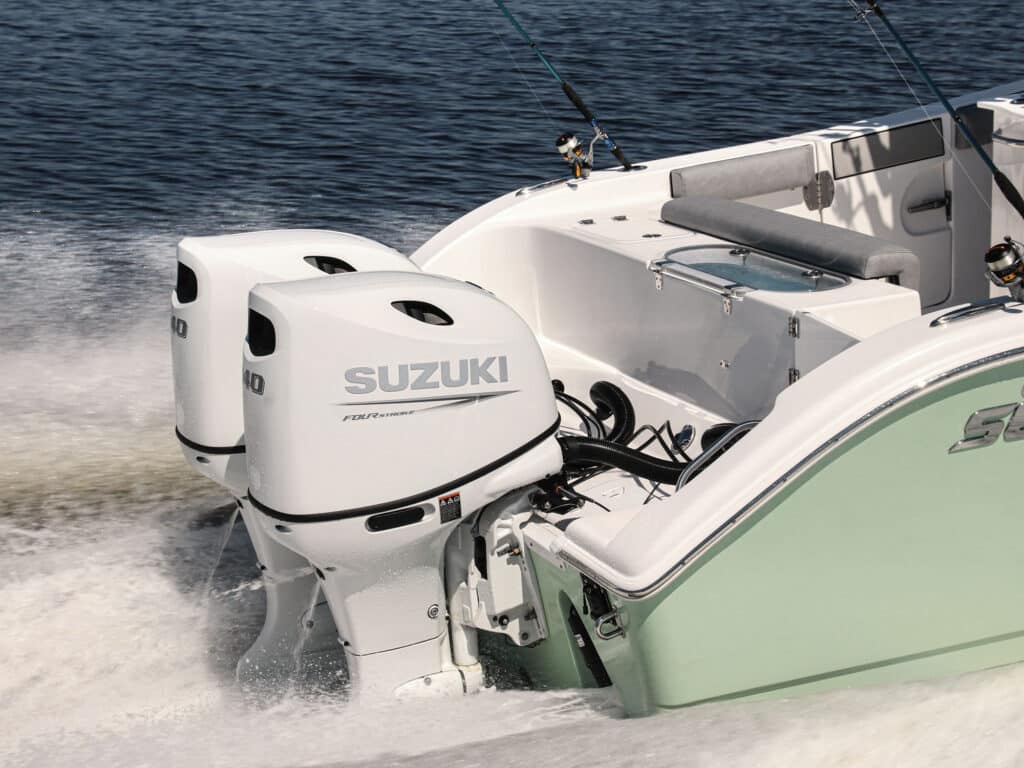
This could be the shortest column in marine journalism history. “To determine how much horsepower to put on your boat’s transom, find the manufacturer’s maximum horsepower specification, and whatever number is listed there is the total power to install.” While that’s a good rule of thumb, there might be times when less is more.
Go for the Max?
One good reason to get the most power possible lies in durability and longevity. The greater the horsepower, the less an engine has to work to keep the boat on plane with greater efficiency. Let’s look at an example. The Pathfinder 2005 TRS with a Yamaha F115 will have to operate at 5,500 rpm to reach 36.5 mph and will get 3.5 mpg. Power the same boat with an F150 and it reaches 35 mph at 4,500 rpm and will get 3.9 mpg, according to the manufacturer-supplied performance data. This example also illustrates that the notion that less horsepower equals better fuel economy isn’t always true. Top speed is another reason to max out the ponies. More horsepower translates to a higher top speed. Sometimes the difference is dramatic. A Sundance FX19 flats boat with a Yamaha F90 will reach 41 mph, but it’s a 60 mph boat with an F150. Then there’s the resale value. If a buyer is looking at two identical boats and one has more power than the other, they will typically choose and often pay more for the more powerful boat.
Mo’ Power, Mo’ Money
Often, taking even a small leap in power can cost big bucks. The standard engine on the Blackfin 232DC is the Mercury 225XL FourStroke, but bumping it just 25 hp to the Mercury 250XL will cost $4,921 more. In this case, the big jump comes by moving from the 3.4L family of V-6 engines to a 4.6L V-8 for the 250. When reviewing the build-a-boat feature found on most manufacturers’ websites, compare the cost with different engines and look for the sweet spot where the least amount of money buys the biggest jump in horsepower. Often, the max-power option is an exotic engine that comes with a larger-than-proportional price tag.
Read Next: How Much Fuel Capacity Do I Really Need?

Less Power Equals Less Weight?
Sometimes, adding more horsepower changes the weight drastically, but an increase in horsepower often adds no weight because it is done via programming the engine’s electronic control unit. For years, Mercury’s supercharged Verados all shared the same 2.6L inline-six-cylinder block, even though the horsepower could range from 200 to 400, with a weight difference of just 38 pounds.
In the case of the Mercury 225XL V-6 versus the 250XL V-8, the weight difference is 52 pounds, which might not seem like much but could be significant on a small flats boat. Using multiple engines just exacerbates the difference.
Moving to the largest engine can make a huge difference. Mercury’s new Verado 600 is a 7.6L V-12 behemoth with a host of technological advances, but it also weighs 1,260 pounds. Yamaha’s XTO Offshore 450 V-8 weighs 988 pounds. In comparison, the Mercury 450R weighs just 689 pounds. Although more weight can cause slower hole-shot times, often this is counterbalanced by the additional horsepower and the larger prop that a higher-horsepower engine can swing. Need an example? Take a look at the Mercury Verado 600 V-12 that turns a massive 18-inch-diameter prop.
Horsepower needs also change if only one or two people routinely use the boat. If you typically invite a crowd of friends to go fishing, powering up to the max might make more sense. Otherwise, the boat can be sluggish and slow to respond to the throttle.
Variables Matter
If a boat weighs more, it’s probably going to need more power, but factors such as the hull design also matter. A Carolina Skiff 21 SWS is a 21-footer that features a relatively flat hull bottom, weighs 2,351 pounds, and has a maximum horsepower rating of 150. The Regulator 23 has a steep 24-degree transom deadrise to help it slice through ocean waves and weighs 6,700 pounds with a single outboard. The smallest outboard you can buy it with has 300 hp.
If a boat has a transom deadrise of 20 degrees or greater and is run in waters that can get rough, err on the side of more power. During situations like running through a ripping inlet, having crisp throttle response is often needed to safely transit out or return.
If you’re not sure about how much power to choose, talking to a local dealer is a good idea. They have the experience with and information on the models they sell that can help you make the best possible decision when it comes to the question of, “How much horsepower do I really need?”










